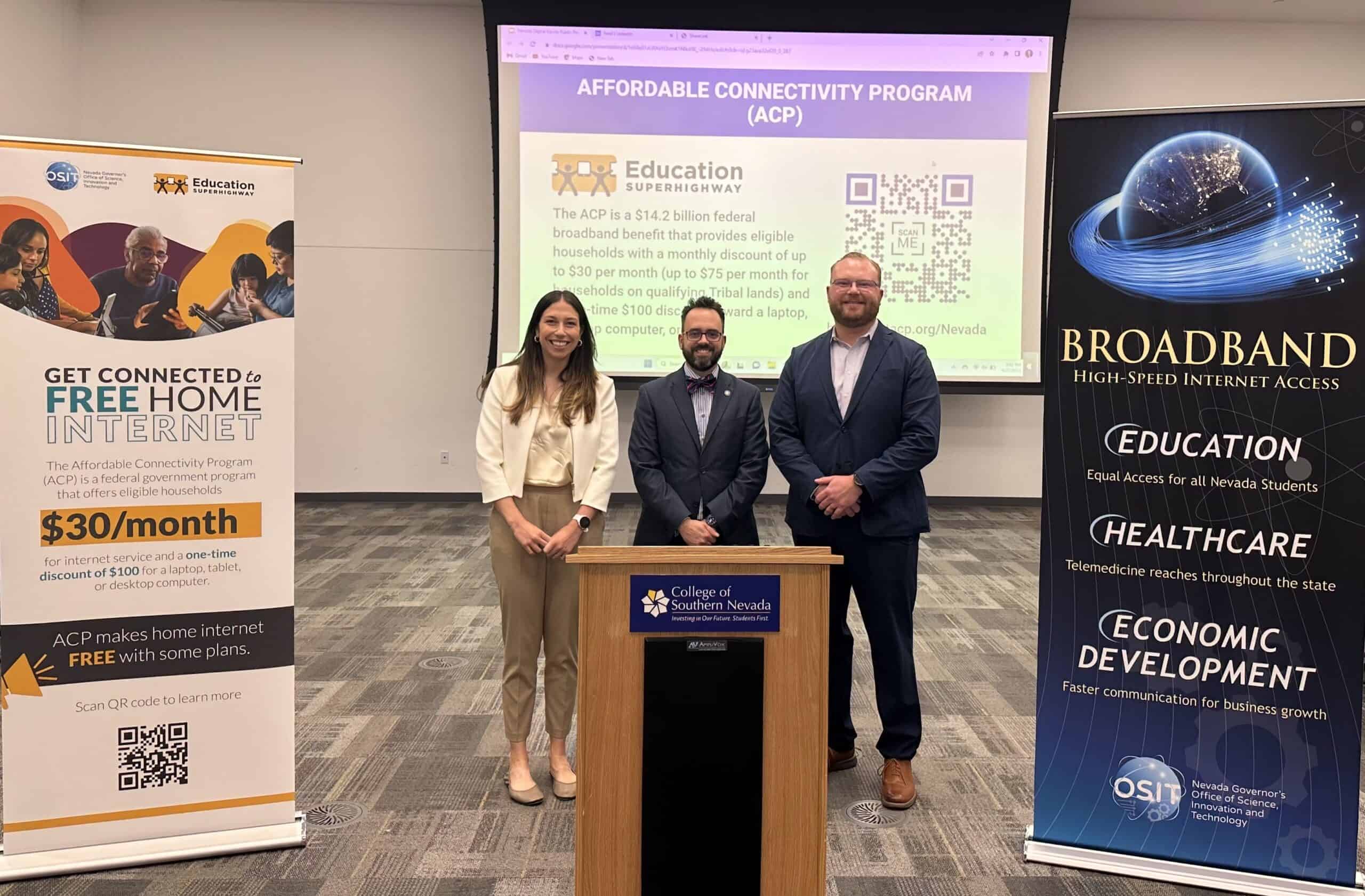CARSON CITY, NV – The Nevada Governor’s Office of Science, Innovation & Technology (OSIT) today announced a statewide initiative to increase awareness of the Affordable Connectivity Program (ACP), a long-term benefit to help lower-income families pay for high-speed internet.
“Internet access is essential to the lives of Nevadans, and it’s especially critical in ensuring access to education, healthcare, and access to government services,” said Governor Joe Lombardo. “We need to make sure all Nevadans have a chance to connect, which is why we are committed to helping families access high-speed internet through the Affordable Connectivity Program.”
The ACP is a $14.2 billion federal broadband benefit funded by the Infrastructure Investment and Jobs Act (IIJA) that provides eligible households with a monthly discount of up to $30 per month (up to $75 per month for households on qualifying Tribal lands) and a one-time $100 discount toward a laptop, desktop computer, or tablet. 493,948 Nevada households are eligible for the ACP, yet only 197,795 (40% of those eligible) have enrolled.
In partnership with EducationSuperHighway, the national non-profit with a mission to close the broadband affordability gap, the initiative will build a coalition of local stakeholders and trusted institutions to overcome complex awareness, trust, and enrollment barriers that prevent households in the nation’s most under-resourced communities from enrolling. Participants will include housing authorities, nonprofits, school districts, libraries, and Internet service providers.
Brian Mitchell, OSIT Director; Jack Conroy, NTIA’s Federal Program Officer for Nevada and Jenny Miller, Director of Government Affairs at EducationSuperHighway.
“Broadband is one of the most transformative technologies of our generation, but too many people are left behind because they don’t have reliable, affordable access to the internet,” said OSIT Director, Brian Mitchell. “The Affordable Connectivity Program fully covers the cost of high-speed internet for millions of eligible American families. Let’s work together to expand outreach for this critical program and get more residents connected!”
ACP-eligible households include families with incomes at or below 200% of the federal poverty level and those who qualify for Lifeline, SNAP, Free and Reduced-Price School Lunch, WIC, and other government-funded programs. The new initiative will leverage state channels to directly promote the ACP to households in these programs and fund local governments, community-based organizations, and trusted institutions to reach unconnected households.
Combined with commitments by Internet Service Providers to deliver high-speed internet plans for no more than $30 per month, eligible households can receive high-speed internet at no cost by pairing their ACP benefit with one of these “free with ACP” broadband plans.
“To close the digital divide, we need to ensure that unconnected households know about the Affordable Connectivity Program and that it is easy for them to enroll,” said Evan Marwell, CEO of EducationSuperHighway. “We are excited to partner with Governor Lombardo to raise awareness of this critical program and ensure all Nevadans can access affordable high-speed home internet.”
EducationSuperHighway will support statewide awareness efforts by training community leaders and partner organizations and providing outreach materials and tools to help households enroll. The non-profit recently launched GetACP.org/Nevada, a virtual mobile assistant that simplifies the ACP enrollment process by providing real-time support to help eligible households determine the easiest way to qualify. The mobile website is available in four languages and helps applicants overcome critical barriers in the enrollment process by helping them identify the documents needed when applying and find “free with ACP” broadband plans available at their address. OSIT, Clark County, and the Northern Nevada Institute of Public Health were all recently awarded an FCC ACP outreach grant which will provide support, funding, and resources needed to implement innovative strategies to reach historically underserved and unserved communities.
###




